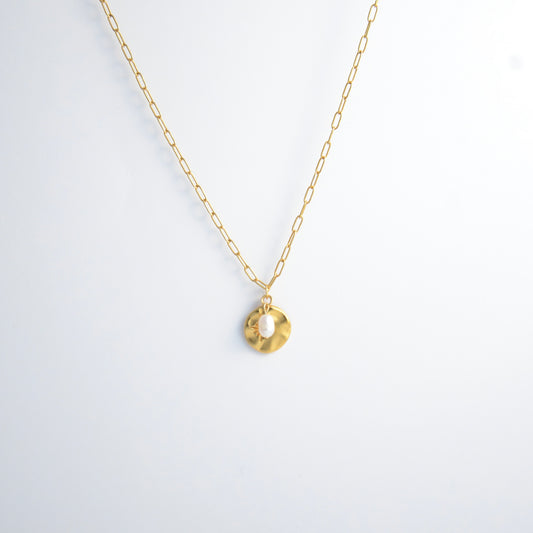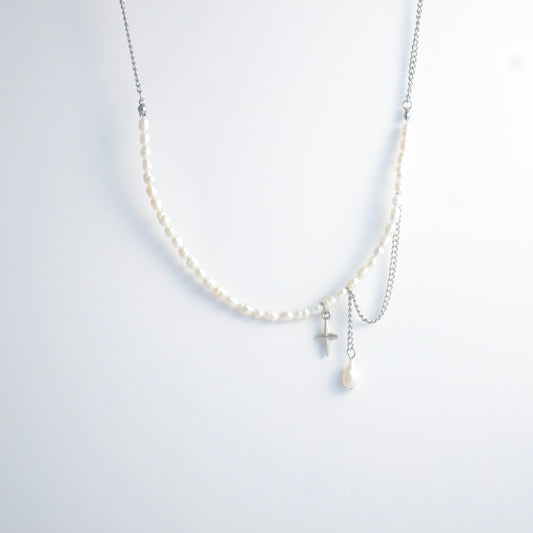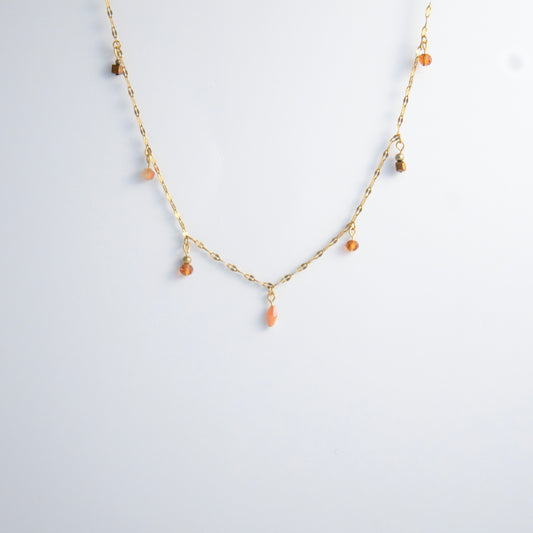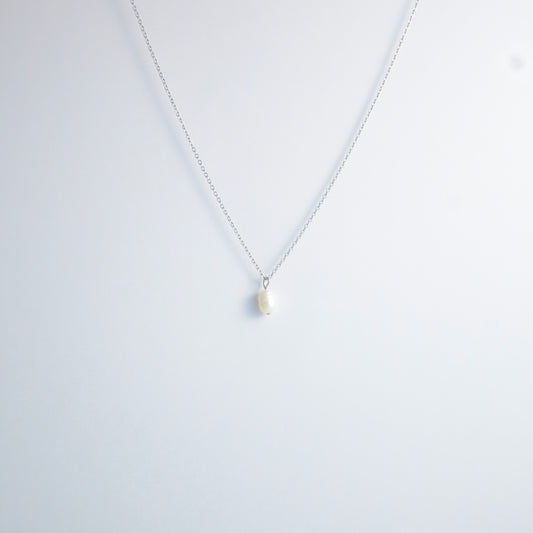The Complete Guide to Pearls
Pearl Types, Quality, Certifications & How to choose your pearl jewelry

- Preface by Glass Balloon -
For centuries, pearls have symbolized wisdom, purity, rebellion, and transformation. And just like us, they contain contradictions: soft yet enduring, classic yet ever-changing.
At Glass Balloon, we design for that duality. The person who wears pearls not just for elegance, but for the quiet fire they carry underneath.
Whether you're buying your first strand or seeking a bridal heirloom, this is your guide to understanding how to pick pearls.
- Table of contents -
- Preface
- Pearl Preference Around the World
- Types of Pearls
- Glossary of Pearl Terms
- Pearl Subtypes: Beyond the Basics
- Pearl Grading Systems
- Certified vs Non-Certified Pearls
- How to Choose the Right Pearl
- Pearl Preferences Around the World -
Pearls carry different cultural weight depending on where you are, but no matter the context, pearls are never just accessories. They're cultural stories and forms of self expression made wearable.
Collapsible content
North America
In North America, especially the U.S. and Canada, pearls have historically been associated with bridal elegance and high society, but are now being reclaimed in minimalist and edgy fashion circles.
East Asia
In East Asia, especially Japan and China, pearls are deeply symbolic of feminine grace, tradition, and family honor. Akoya pearls are particularly beloved for their pristine roundness.
South Asia and Middle East
In South Asia and the Middle East, pearls are tied to nobility and status. Gold South Sea pearls are especially prized.
Western Europe and Australasia
In Western Europe (such as U.K., Germany, France) and Australasia (including Australia and New Zealand), younger generations are embracing baroque and colored pearls as anti-traditional statements, wearable expressions of individuality and emotional authenticity.
- Types of Pearls -
Each pearl type carries a unique story, visual character, and price range. Here's a quick breakdown.
- South Sea pearls are the most luxurious and rare. They shine in gold, silver, or white tones. Ideal for investment pieces.
- Tahitian pearls come from French Polynesia and are famous for their dark, mysterious hues. Perfect for bold, modern styles.
- Cortez pearls, found only in Mexico, are prized by collectors for their vivid, natural iridescence. They're small-batch, artisanal, and entirely unique.
- Akoya pearls are the go-to for classic strands. Cultured in Japan and China, they’re round, radiant, and perfect for timeless bridal or office looks.
- Freshwater pearls, mainly from China, offer the widest range of colors and shapes (often baroque). Ideal for playful, everyday jewelry.
Each type has its own vibe, value, and best use. Scroll the table below to explore what fits your story best.
- Glossary of Pearl Terms -
Before we step into the world of pearl subtypes, here are a few terms to hold in your pocket. They offer a glimpse into how pearls come to be and why their shapes and stories are never quite the same.

Anatomy of a Pearl
Nacre
Pronounced "NAY-ker" is the outer layer that make up most of the pearl’s surface. This is what gives pearls their luster, color and durability. Thicker nacre = stronger glow and better durability.
Nucleus
The internal "seed" that is inserted into the mollusk where the pearl forms around.
If you're drawn to the deeper details, you’ll find a full glossary waiting just below.
Collapsible content
Structure & Composition
Nacre: Layers that form the pearl; thicker nacre means better luster and durability.
Bead-Nucleated: A round bead is inserted to form the core of the pearl (common in Akoya, South Sea, Tahitian).
Tissue-Nucleated: A piece of mantle tissue inserted into the mollusk for the pearl to form around; used in most freshwater pearls.
Cultured Pearl: Formed with human assistance (bead or tissue nucleation).
Natural Pearl: Formed without human intervention; extremely rare.
Appearance & Quality
Luster: The reflective quality or shine of the pearl's surface. Some pearls are like mirrors where your reflection can be seen when looking into it.
Overtone: Single secondary color or translucent tint cast over the pearl's base color, like rosé or silver.
Orient: Iridescent rainbow-like play of color across the surface. Subtle multicolor iridescence like oil on water seen often on baroque pearls.
Surface Quality: The presence or absence of blemishes and flaws.
Shape: Described as round, baroque, drop, button, etc.
Pearl Varieties
Keshi Pearl: Formed without a bead nucleus; 100% nacre and often baroque in shape. Accidental or natural byproduct of farming. Can occur from Akoya, Tahitian, or South Sea oysters.
Mabe Pearl: Dome-shaped, blister pearls grown against the inner shell wall. Can occur in Akoya or South Sea environments.
Natural: Formed in the wild with no human intervention (extremely rare today).
Bead-Nucleated: Uses a round nucleus; results in more consistently round pearls (e.g., Akoya, South Sea, Tahitian).
Tissue-Nucleated: No bead; uses mantle tissue to initiate formation (e.g., freshwater pearls).
Grading & Certification
AAA–A Grading: Commercial, but unregulated system used for Akoya and freshwater pearls.
A–D Grading: Regulated system used for Tahitian and South Sea pearls.
Hanadama: Certification for the top 1–2% of Akoya pearls, issued by Japan’s PSL.
GIA Certification: Third-party lab report confirming pearl type, treatments, nacre thickness, etc.
- Pearl Subtypes: Beyond the Basics -
We’ve already explored the main types of pearl types by origin — South Sea, Tahitian, Cortez, Akoya, and Freshwater. But within each of these types, there are even more layers to uncover.
Pearl subtypes and varieties can be broadly grouped by these categories:
- Formation or how they form
- Structure or what they’re built around
- Shape or how they appear on the outside
This next section breaks those categories down so you can better understand how pearls grow, what makes each one unique, and why some pearls feel refined while others feel raw, wild, and full of movement.
Collapsible content
Formation
How a pearl begins — naturally or with human help.
Formation tells us whether the pearl is a product of nature alone or a result of pearl farming. This affects rarity, value, and how the pearl is graded.
- Natural: Formed without any human intervention
- Cultured: Formed with human assistance (most pearls today)
- Keshi: A byproduct pearl with no nucleus often accidentally formed in pearl farms
- Mabe: Pronounced "MAY-bay", grown against the shell wall (cultured, half-round)
Structure
What’s at the core—and how the pearl is built.
For cultured pearls, pearl farmers will artificially insert an foreign object into the mollusk, to which the pearl takes form around it. Structure refers to the internal composition: whether the pearl formed around a bead, tissue, or nothing at all. This impacts nacre thickness, shape, and durability.
- Bead-Nucleated: A round bead inserted to start the pearl (Akoya, South Sea, Tahitian). This results in very round pearls do to the shape of the beads.
- Tissue-Nucleated: Formed by inserting a small piece of mantle tissue from a freshwater mollusk. This often results in baroque pearls due to the shape of the tissue.
- Keshi: Pearls formed accidentally during pearl farming, which means it does not have a core, unlike the bead or tissue nucleated pearls. Keshi pearls are 100% nacre and are highly durable.
Shape
What the pearl looks like on the outside.
Shape and surface determine how the pearl feels visually — classic, organic, bold, or delicate. The structure and formation of the pearls will impact the exterior shape. This category heavily influences how pearls are styled and valued.
Common shapes are round, near-round, drop, button, baroque and more.
- Pearl Grading Systems -
Not all pearls are graded equally. And not all grading systems mean what you think they do.
When you're shopping for pearls—especially online—you'll likely see terms like AAA, Hanadama, or even A–D grade. These labels are meant to help you understand quality (based on luster, surface, shape, color uniformity, nacre thickness and more), but they only go so far without context. Here's what they actually mean, and how to read between the lines.
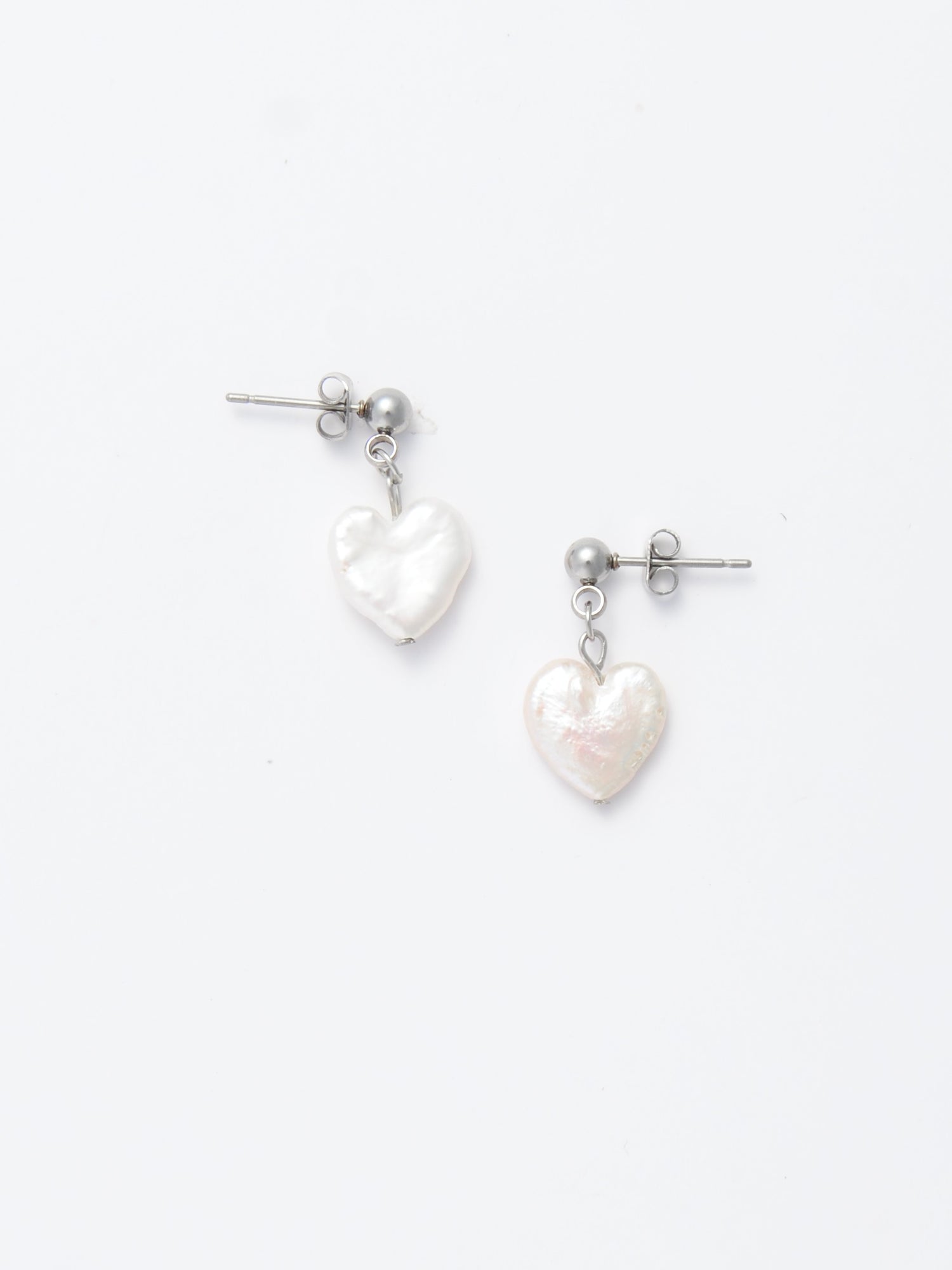
Two Main Grading Systems
AAA-A Grading
- Used for Akoya & Freshwater pearls
- AAA = highest quality; A = lowest quality
- Not standardized, meaning one seller's "AAA" might be another's "AA"
A-D Grading
- Used for Tahitian and South Sea pearls
- A = highest quality; D = lowest quality
- More regulated, especially in French Polynesia by GIE Perles de Tahiti
✨ Tips for choosing your pearls ✨
For Akoya and Freshwater pearls: Grading is useful, but inconsistent. Ask for photos, compare vendors, and look 3rd party certification reports if you're spending significantly.
For Tahitian and South Sea pearls: A–D grading is more reliable, especially when regulated. Still, certification or transparency is key.
- Certified vs Non-Certified Pearls -
When you’re holding two pearl strands—both luminous, both beautiful—it can be hard to see why one costs $200 more than the other. The answer is often in a single piece of paper: a certificate.
So, what does it mean when a pearl is certified? And when is that certification actually worth it?
Collapsible content
Certified Pearls
Certified pearls are pearls that are examined and confirmed by a third-party of its quality. These third-parties include:
- GIA (Gemological Institute of America)
- Pearl Science Laboratory (Japan)
- GIE Perles de Tahiti
These labs don’t sell pearls. They simply verify them and create reports to document their findings. A certification may confirm:
- Type of pearl (Akoya, Tahitian, etc.)
- Natural or cultured
- Treatments applied (like dyeing or bleaching)
- Nacre thickness, surface quality, and luster
- Country of origin or mollusk type
Think of it as the pearl’s passport — objective, detailed, and traceable.
Non-Certified Pearls
Non-certified pearls are simply pearls that haven’t been evaluated by a third-party gem lab. They can still be real, radiant, and high-quality—especially when sourced with care and intention.
At Glass Balloon, we choose our pearls not for paperwork, but for the way they catch light, hold shape, and carry quiet stories. Each one is selected for its character, not just its category. Because to us, beauty lives in expression.
- How to Choose the Right Pearl -
There’s no single rule for choosing the right pearl, only the one that feels right to you. Still, a little guidance can help turn feeling into clarity.
Start with how you want the piece to speak.
- Classic & timeless? Choose a round Akoya pearl
- Modern & expressive? Try baroque Tahitian or freshwater pearl, something with irregular shape
- Heirloom or gift? Prioritize pearls with deep luster and, if it adds confidence, certification
- Everyday wear or personal ritual? Let shape and texture lead the way. Choose what resonates, not just what's perfect
The right pearl isn’t always the most expensive or the most round. It’s the one that reflects something true back at you. When you're ready to find the one that speaks to you, explore our handmade pearl jewelry collection — each piece made to tell your story.
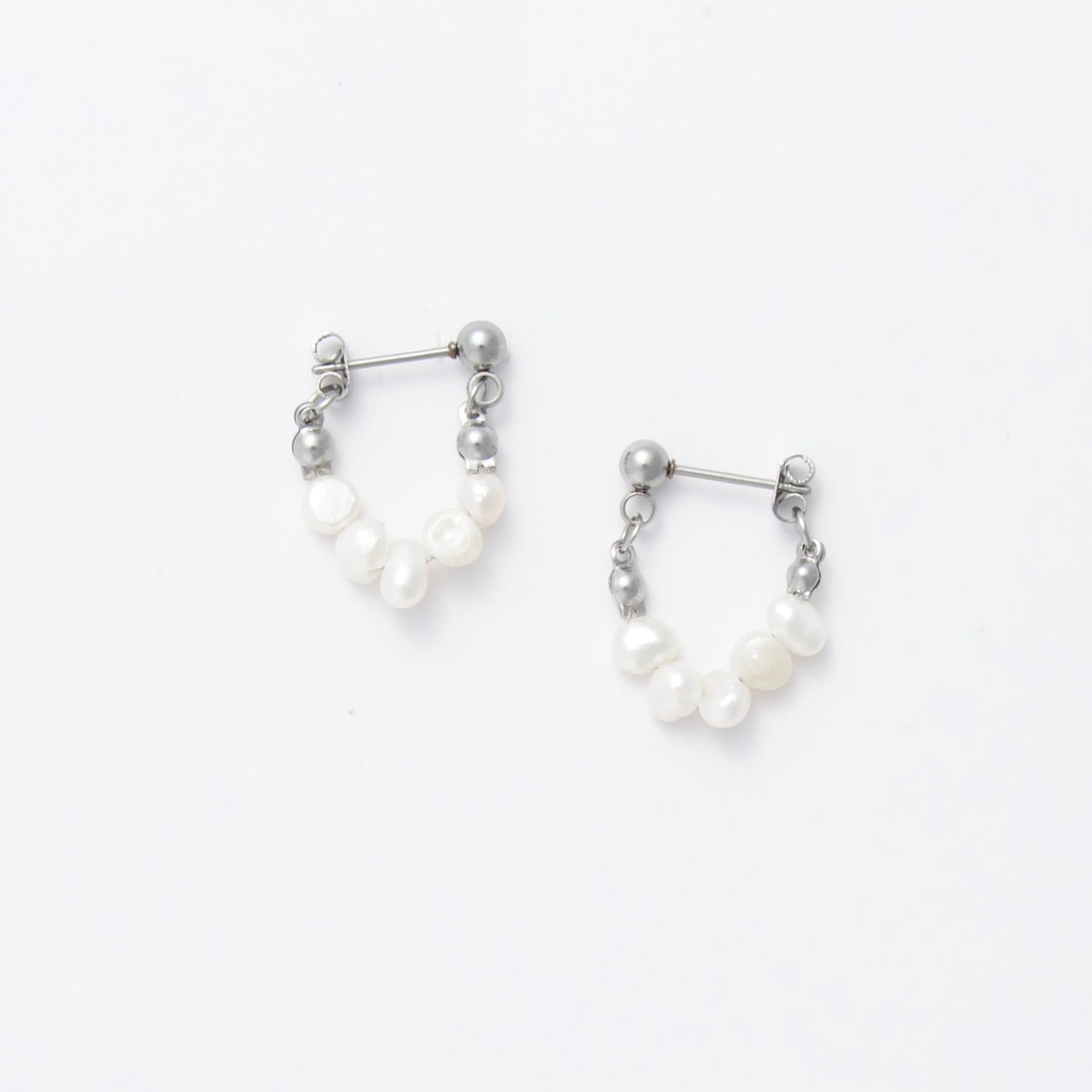
Jewelry Care
The complete guide to clean and care for your jewelry and accessories depends on the metal and stones. Key to long-lasting accessories is through proactive maintenance.
- You may like these -
-
Gold Paperclip Chain Necklace – Sun Pendant with Pearl Charm
Regular price $25.00 USDRegular priceUnit price per -
Asymmetrical Pearl Choker – Tethered Star
Regular price $30.00 USDRegular priceUnit price per -
Orange Beaded Choker – Sunfall Orbit
Regular price $32.00 USDRegular priceUnit price per -
Silver Dainty Pearl Necklace - The Smallest Moon
Regular price $25.00 USDRegular priceUnit price per
-

Handwritten in metal
Every piece is design and made by hand.
Customizable to be who you are.
-

Your untold story
Each versatile design helps you express
and showcase duality of your inner and outer self
-

Gift for you and me
Ethical sourcing and recyclable packaging to preserve the beauty of our earth.



